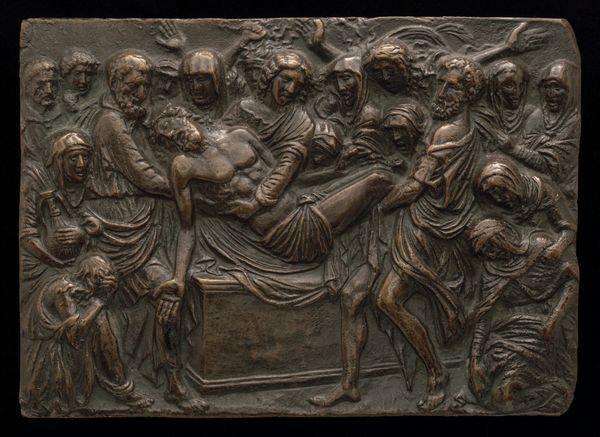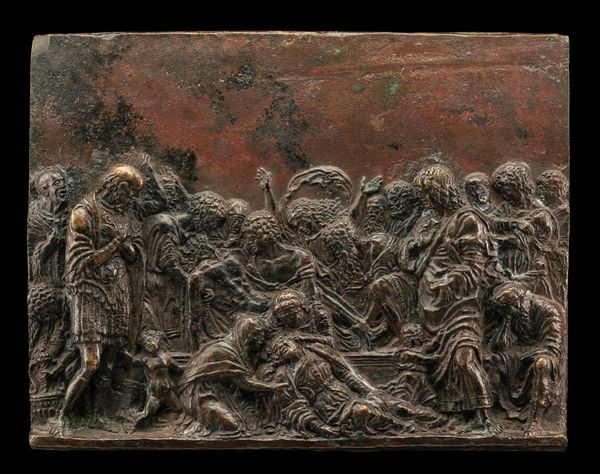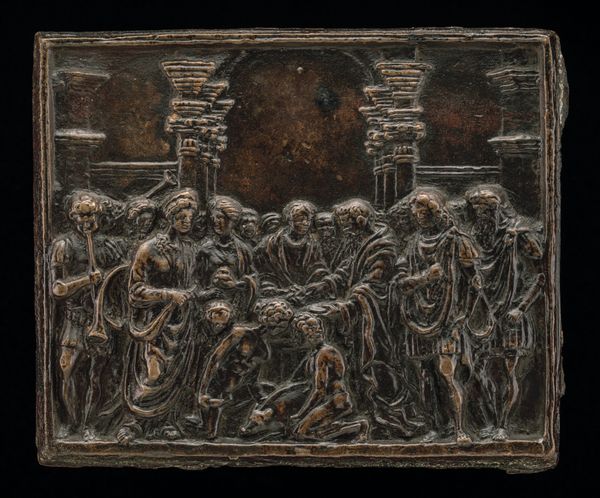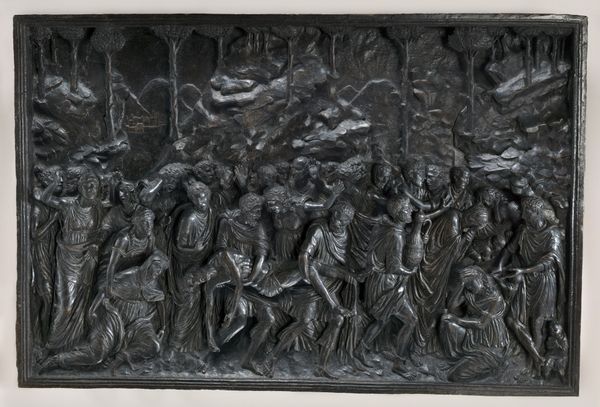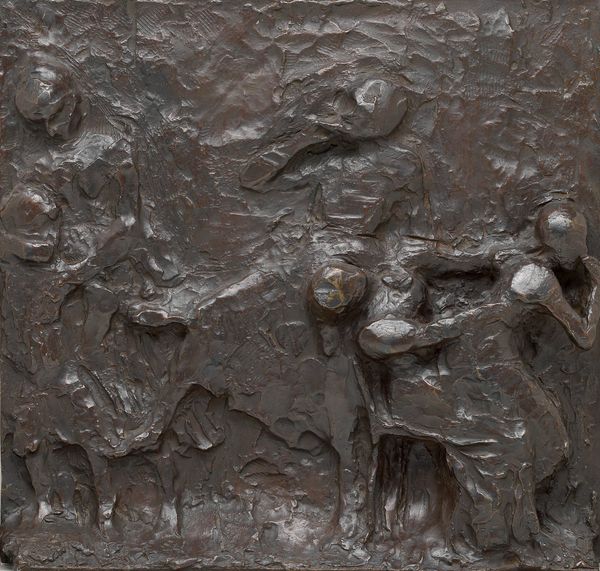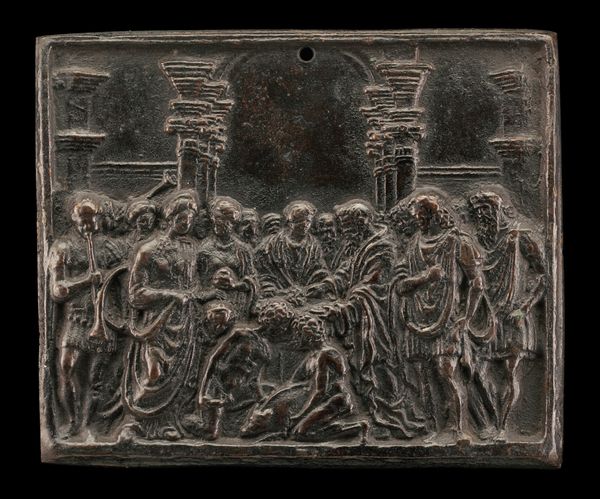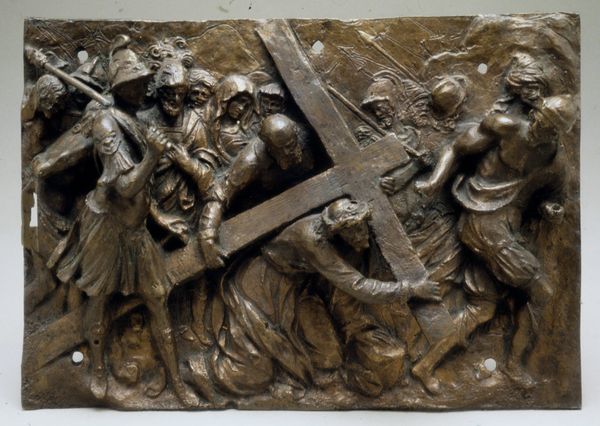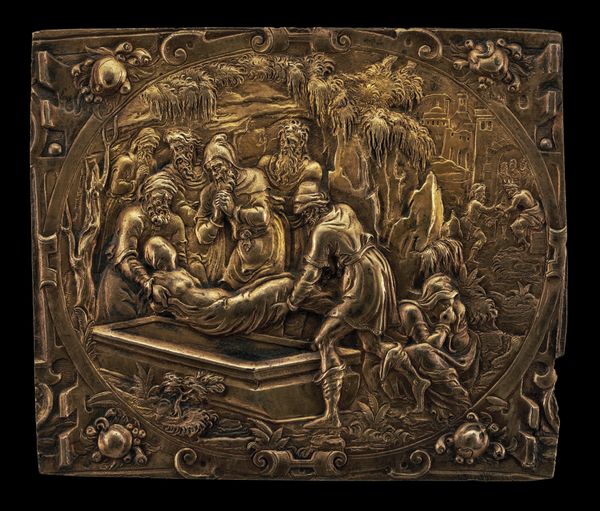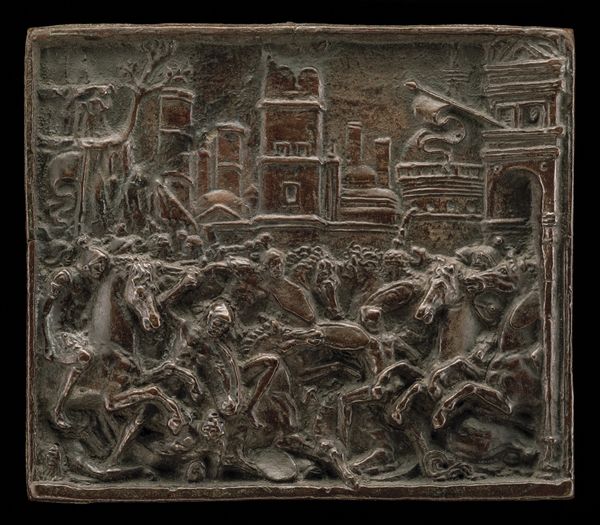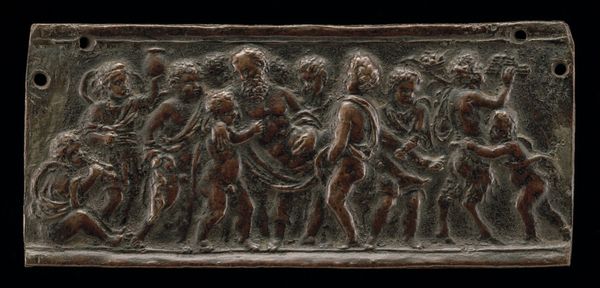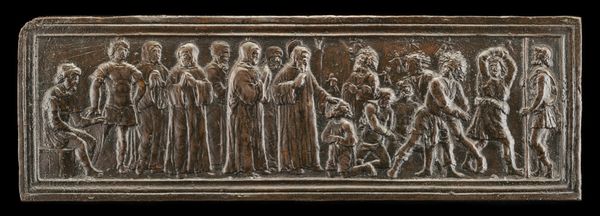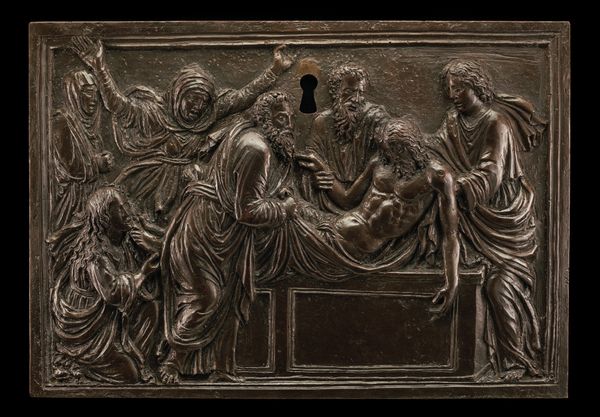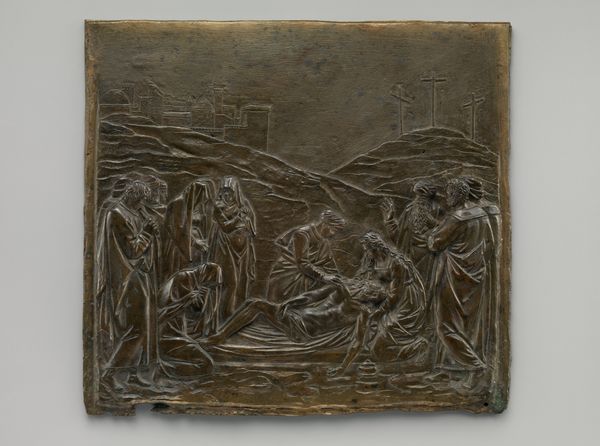
relief, bronze, sculpture
#
sculpture
#
relief
#
bronze
#
figuration
#
11_renaissance
#
sculpture
#
history-painting
#
italian-renaissance
Dimensions: overall: 11.32 × 15.75 cm (4 7/16 × 6 3/16 in.) gross weight: 726.5 gr (1.602 lb.)
Copyright: National Gallery of Art: CC0 1.0
Curator: Andrea Briosco, better known as Riccio, crafted this bronze relief, "The Entombment." It's a scene teeming with emotion, capturing the moment Christ's body is laid to rest. Editor: It's intensely dramatic. The figures seem almost to spill out of the frame, their grief rendered in such physical, tangible forms. The bronze seems to almost vibrate with sorrow. Curator: Absolutely. Riccio, working during the Italian Renaissance, was deeply influenced by classical art. He often incorporated elements of ancient sculpture into his works. He was associated with the humanist circles of Padua, which focused their attention on man’s place in the universe, and the importance of secular leadership. Look closely at the detail in the musculature of Christ and the flowing drapery; there’s a real sense of theatricality. Editor: But that theatricality serves a powerful emotional purpose. It draws the viewer into the heart of this tragic moment. We're witnessing not just the death of Christ, but the collective anguish of his followers. What social structures and cultural mores are revealed by their exaggerated grief? Curator: In Renaissance society, art was a tool for reinforcing religious doctrine. These depictions of suffering served as potent reminders of the sacrifices made for salvation and it offered viewers ways of contemplating humanism in sacred stories. These highly expressive artworks, disseminated throughout society, reinforced specific narratives about authority and sacrifice. Editor: Yes, and it's important to remember the power dynamics inherent in such displays of suffering. Who gets to grieve? Whose pain is validated and whose is ignored? Looking at this through a contemporary lens, how does this artwork invite viewers to consider structures of grief? Curator: That’s a vital point. I would say, though, the remarkable artistry on display, from the composition to the subtle variations in relief, are what elevated Riccio among his contemporaries. His talent solidified his patron's standing. Editor: True, the craftsmanship is undeniable. And yet, I am compelled to reflect on the ways art, even masterpieces such as this, may participate in reinforcing historical imbalances of authority. Curator: Indeed. Contemplating this piece, with both its beauty and complicated social dimensions, challenges us to reevaluate our engagement with Renaissance artwork and its public significance. Editor: Agreed, the piece invites us to hold complexity: beauty and suffering, reverence and scrutiny. And perhaps in that tension, we can find new meaning.
Comments
No comments
Be the first to comment and join the conversation on the ultimate creative platform.

